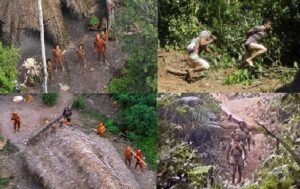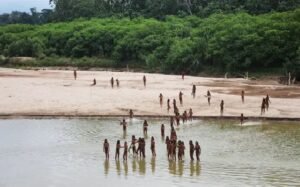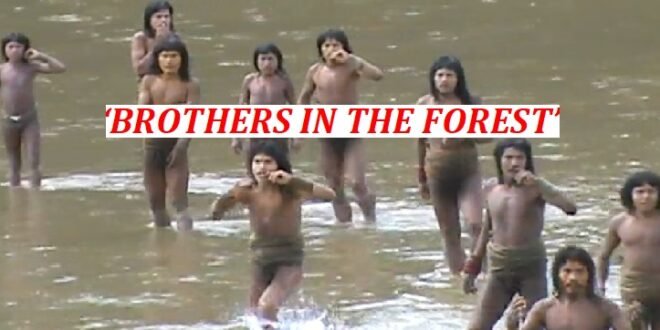28-10-2025
MANAUS: Tomas Anez Dos Santos was working in a small clearing in the Peruvian Amazon, when he heard footsteps approaching in the forest.
 He realized he was surrounded, and froze.
He realized he was surrounded, and froze.
“One was standing, aiming with an arrow,” he says, “and somehow he noticed I was here and I started to run.”
He had come face to face with the Mashco Piro. For decades, Tomas who lives in the small village of Nueva Oceania, had been practically a neighbor to these nomadic people, who shun contact with outsiders. However, until very recently, he had rarely seen them.
The Mashco Piro have chosen to be cut off from the world for more than a century. They hunt with long bows and arrows, relying on the Amazonian rainforest for everything they need.
“They started circling and whistling, imitating animals, many different types of birds,” Tomas recalls.
“I kept saying; ‘Nomole’ (brother). Then they gathered, they felt closer, so we headed toward the river and ran.”
A new report by the human rights organization, Survival International, says there are at least 196 of what it calls “uncontacted groups” left in the world. The Mashco Piro is believed to be the largest. The report says half of these groups could be wiped out in the next decade if governments don’t do more to protect them.
It claims the biggest risks are from logging, mining or drilling for oil. Uncontacted groups are extremely vulnerable to basic disease, as such, the report says a threat is posed by contact with evangelical missionaries and social media influencers looking for clicks.
 Recently, Mashco Piro people have been coming to Nueva Oceania more and more, according to locals.
Recently, Mashco Piro people have been coming to Nueva Oceania more and more, according to locals.
The village is a fishing community of seven or eight families, sitting high on the banks of the Tauhamanu River in the heart of the Peruvian Amazon, 10 hours from the nearest settlement by boat.
The area is not recognized as a protected reserve for uncontacted groups, and logging companies operate here.
Tomas says that, at times, the noise of logging machinery can be heard day and night, and the Mashco Piro people are seeing their forest disturbed and destroyed.
In Nueva Oceania, people say they are conflicted. They fear the Mashco Piro’s arrows but they also have deep respect for their “brothers” who live in the forest and want to protect them.
“Let them live as they live, we can’t change their culture. That’s why we keep our distance,” says Tomas. The people in Nueva Oceania are worried about the damage to the Mascho Piro’s livelihood, the threat of violence and the possibility that loggers might expose the Mashco Piro to diseases they have no immunity to.
While we were in the village, the Mashco Piro made their presence felt again. Letitia Rodriguez Lopez, a young mother with a two-year-old daughter, was in the forest picking fruit when she heard them.
“We heard shouting, cries from people, many of them. As if there were a whole group shouting,” she told us.
It was the first time she had encountered the Mashco Piro and she ran. An hour later, her head was still pounding from fear.
“Because there are loggers and companies cutting down the forest they’re running away, maybe out of fear and they end up near us,” she said. “We don’t know how they might react to us. That’s what scares me.” (Int’l News Desk)
 Pressmediaofindia
Pressmediaofindia




